Changes in Britain since 1948
What has changed in Britain since 1948? Many of the things that are a large part of modern life were either unheard of in 1948, or the preserve of the fortunate few. This section explores some of the key elements of life today and discusses when they came about and why they made such a profound change in the way we live.
This article may be of particular use to school pupils and their teachers studying Key Stage 2 History.
The car
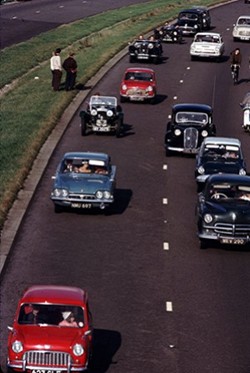
There were over a million cars on Britain's roads before the War and the holiday traffic jam was already part of the British way of life, at least for the middle classes. However, for the majority, car ownership was little more than a dream.
In the 50s and 60s many more people were able to buy a car. Cars such as the Mini and the Ford Cortina brought cheap motoring to the masses in the early sixties. By today's standards they were crude and uncomfortable, but for many they were the answer to a prayer. The difference between family life with a car and without was huge. Car ownership made possible all sorts of day trips that would have taken forever by public transport.
Once Britain's motorway network was in place, holiday traffic jams disappeared, at least for a few years and people were free to travel anywhere in the UK. It opened up Devon and Cornwall as holiday destinations and allowed ordinary people to discover new destinations, previously unthinkable by bus or train.
Traditional forms of transport such as trains and buses were abandoned in favour of private cars. In the sixties, Dr Beeching was called in to rationalise the railways and he closed many branch lines. This rationalisation is often viewed in a negative way today. However, the simple fact of the time was that the trains were not being used.
Recent attempts to encourage the use of public transport in favour of private cars has only had limited success. The attractiveness of a vehicle that you can get in and use at a moment's notice is clear.
Interactive: Try going without using a car for a weekend. Use alternative means of transport such as buses, walking or cycling.
Read more: Motoring in the 60s Cars of the 50s
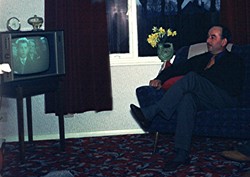
Television
Although television broadcasts were made before the Second World War, there were very few television sets in people's homes in 1948: only the very well off were able to afford one. By the end of the fifties over three quarters of the population had access to a television set. It was a massive change: people discussed what was on TV, cinema audiences dwindled and television became a part of nearly everyone's life. By the end of the sixties, television ownership was almost universal.
Originally there was only one channel, the BBC. ITV started broadcasting in 1955 and BBC2 was added in 1964. It wasn't until 1982 that another television channel appeared - Channel 4, with its first programme being the popular, long-running quiz show Countdown. Colour broadcasts started at the end of the sixties. In those days few people had a colour set, they were very expensive to buy. By the end of the seventies, colour TV was much more common. For most people there was no way to record a TV programme. You had to stay in and watch your favourite, programme or otherwise you would miss it. Most series were repeated only once and some were not repeated at all. Popular TV programmes could cause empty seats at restaurants on certain nights of the week. Video recorders, although available from 1971, were very rare. It was only in the 80s that people started to use them in large numbers. DVD players and recorders came much later.
Interactive: Try not to watch the television for a weekend, or try only watching BBC1 and/or ITV.
Read more: Television in the 50s and 60s
The Internet
The Internet has brought profound changes to the way we live today. It has changed how we work, how we shop and how we spend our leisure time. Without the Internet, you would not be able to read this article today. The full effects of being able to buy almost anything online and the new ways of being able to interact with other people are not fully apparent. It is likely that we will do more shopping online and many high street shops will disappear.
The Internet has its roots in the US in the late sixties. However, widespread use by academic institutions in the UK was not until the early 90s. One of the first images was the 'Cambridge coffee pot', an early web cam picture of a coffee machine in the computer laboratory at the University of Cambridge.
For many people, their first experience of the Internet was through a dial-up connection in the 90s. It was slow, but allowed the use of personal email and access to the web.
Since then the Internet has grown substantially. It will continue to evolve now mobile and wireless access is possible.
Interactive: Consider how much the Internet plays a role in your life. Write down how you use it and consider what life would be like without it. Instead of sending an email to a friend, why not write them a letter?
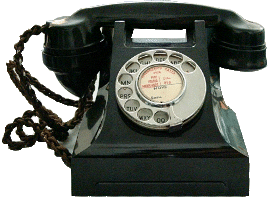
Telephone
In 1948 very few people had a telephone. Although invented nearly one hundred years previously in 1876, and telephone calls to the US became possible in the 30s, the telephone was very expensive in 1948. They were only used in businesses and in some well off households.
The telephone was in a similar position to television, but the take up by the public was much slower. Although it was still expensive, so were televisions sets and cars. You might like to think about why it took us longer to adopt the telephone than the television and the motor car. One explanation is that you needed a few friends and relations to have a telephone before it was of any use to you and your friends and relations would need to wait until you had one. With the television, it did not matter if you did not know anyone else with one. There was some kudos to be gained by being the first in you street to have a TV, recognised by proudly displaying the aerial on the roof.
The telephone had more widespread use in the 70s but there were still only two models available, a standard dial phone or the more modern looking Trimphone.

Mobile phone
The next stage in the development of the telephone was the mobile phone. The police had walkie talkies, but it took a long time before the technology to create a usable mobile phone network was possible. This did not happen in the UK until 1985. Before then a few people had radio phones, but these were limited in number and very expensive.
Initially mobile phones were still very expensive. They were mainly used by businesses and very wealthy individuals. However, as the price of the technology came down, more people were able to afford them. There was no barrier to buying one, as there was with the landline telephone in the 50s and 60s. You could always use a mobile phone to call people on their landline. The main factor in the spread mobile phone use was the cost of the handsets and calls coming down to a level that most people could afford.
Interactive: try walking or cycling round to your friends' houses rather than texting. Switch the mobile off for a week and experience life without it.
Read more: Telephone in the 50s and 60s 80s mobile phone
In the home
Peoples' homes have been transformed since 1948. Before 1948 very few of the appliances that we regard as essential to modern life were available to the majority of people. Washing machines and fridges were luxury items. Microwave ovens had yet to be invented, although most homes had a cooker of some sort.
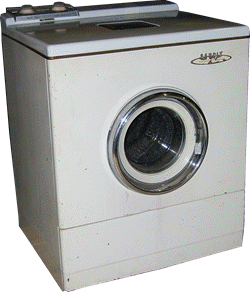
It was the consumer boom of the late fifties that kick-started the change to modern living. The Prime Minister, Harold Macmillan, said "Some of our people have never had it so good" and he was right. Many bought new consumer goods on hire purchase or 'tick'.
In 1948, few people had washing machines. They had to heat washing in a copper, wash by hand and wring it out using a mangle. It was a physically tiring and time consuming activity. The washing machine was an appliance that really transformed housewives' lives in the years since 1948.
In 1971 still only 64 percent of households had a washing machine. In the 60s and 70s many people took their washing to a launderette, rather than do it at home, if they did not have a washing machine. In the film 'On the Buses' (1971) Stan Butler (Reg Varney) asks his Mum to return her new automatic washing machine to the shop, as he cannot afford the HP payments.
The Bendix Gyramatic Washer, above left, is an automatic washing machine from the 50s. By today's standards, it was a large, cumbersome machine. In style though, with a porthole window to put the washing in, it resembles a modern washing machine. In the 50s owning a washing machine such as this was a luxury. Even if people could afford to buy a washing machine, it was usually a twin tub. It had a washing tub and a spin dryer. You had to move clothes from one to the other when the wash had finished. Using a twin tub was much more hard work than using an automatic washing machine.
The fridge, or refrigerator, was also a luxury in 1948. Once again the late 50s boom transformed the situation. By 1962, 33 percent of households had a fridge and by 1971, 69 percent.
In the 70s the freezer became the luxury appliance everyone wanted. You could buy food in bulk to save money, but the main benefit was convenience. More food could be kept in the freezer meaning fewer trips to the shops. Ice cream became an everyday dessert, rather than a rare treat.
In the 80s the microwave oven also transformed life in the kitchen. It reduced meal preparation times and meant that frozen food could be quickly defrosted and cooked. The combination of the microwave and freezer allowed people choice, convenience and flexibility.
Reed more: 70s high tech household
Pop music
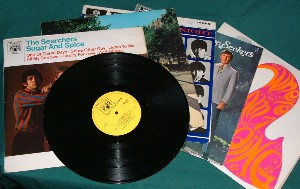
In the sense we think of today, pop music did not exist in 1948. There was a chart, but it was for sheet music only. However, you could buy popular music on records. These were 78s, playing at 78 rpm on a gramophone and were made of an early plastic called shellac rather than vinyl. Even in the 20s and 30s teenagers could annoy the adult population by playing 78s on a wind-up gramophone in the park or on the beach.
Rock'n'roll began in the 50s, originally with Bill Haley and his Comets (that was the official name of the group, which is more commonly called Bill Haley and the Comets). Bill Haley adapted American negro music for white audiences and was hugely successful. British Teddy Boys took Bill Haley's Rock'n'Roll as their own. However, his popularity in Britain declined after he made the mistake of touring the UK. His youthful fans found out he was middle aged and hardly a sex symbol.
Elvis Presley not only sang Rock'n'roll, but looked the part. He quickly became the face of American Rock'n'roll. British singers also adopted the style. Early UK Rock'n'roll stars were Cliff Richard, Billy Fury and Tommy Steele. In the 50s, people thought pop music would be a fad, like hoola hoops or Davy Crocket hats. However, it matured and reinvented itself. The Beatles were the group most responsible for turning 50s' Rock'n'Roll into modern pop music.
From the 50s onwards there has always been a distinct brand of youth music that the older generation cannot understand, or simply dislikes. Pop music is seen as a form of rebellion against the accepted norms of the times. It is, though, a multi-million pound business, which employs large numbers of people and contributes to the world economy.
Interactive: Ask your parents what music they liked to listen to as youngsters. Compare it with what you enjoy. What are the main differences? Ask your parents what they think of your music. If you want to go one stage, further ask your grandparents what they liked. Was it different to what your parents liked?
Reed more: 50s music 60s music
Youth fashion
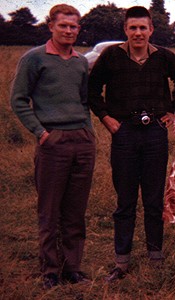
A distinctive youth fashion has been a feature of Britain since 1948. The Teddy Boys in the 50s were seen as pioneers of a different youth style. Other groups followed, each being different from its predecessor and distinct from prevailing grown-up style of dress of the time.
These two lads, left, are not following any particular youth cult style. They are wearing casual clothes from the 50s, jeans or trousers with a top and pullovers. How different is this look from today's casual wear?
Since 1948 various youth cults have emerged, each with its own style and music. Some of the more well known ones are:
- Teddy Boys - 1950s and revived in the 1970s
- Rockers - late 1950s and 1960s
- Mods - 1960s and revived in late 1970s to early 1980s, also in 1990s and today
- Hippies - late 1960s to early 1970s
- Skinheads - late 1960s to early 1970s, and again from 1977 to early 1980s
- Punk - late 1970s to early 1980s
- New Romantic - 1980s
However, even before the War there was a different style of dress adopted by young people compared to adults. The availability of cheap fashion clothing meant it was possible for young adults to dress differently from their parents. In the pre-War era the school leaving age was 14 and often young people with jobs had more money to spend on clothes and entertainment, which in the 30s was the cinema, the dance hall and 78s (see above).
In the 30s there was a fashion for double breasted suits as worn on gangster movies. The Mods in the 60s claimed that they would not let themselves go, like their parent had, suggesting that there was some sort of youth fashion in living memory that their parents had followed.
Read more: Teddy Boys 60s Mods Mods and Rockers
For a look at youth fashions from the pre-Teddy Boy era, watch the film, The Blue Lamp (1950). Dirk Bogarde plays Tom Riley. Tom is a young criminal, referred to as a juvenile delinquent, or hooligan in the film. He dresses very sharply in the latest fashion, which is distinct from the style of the older men.
Interactive: Have a look at the different fashions sections on this website, 50s fashion, 60s fashion, 70s fashion and 80s fashion.
Compare these with what people wear today. How much as changed, how much has not? How many older styles have been reinvented or adapted?
Holidays and travel
Since 1948 there have been huge changes in the way we spend our leisure time. In 1948, with rationing still in force, holidays would be a week at a boarding house by the sea, or following the new fashion of staying in a holiday camp. Cheap air travel has transformed the way the British spend their holidays today, opening up destinations in Europe and beyond.
In the early 50s, the typical holiday would be a week, or fortnight if you were lucky, staying at a small hotel or guest house at a seaside town. Often people travelled by train or coach to their destination.
Once on holiday, children played on the beach making sand castles, swimming or boating in the sea and exploring rock pools. Parents sat in deck chairs and caught up on their reading. Ice creams were a special treat, as were donkey rides and amusements on the pier. Not much has really changed in a typical English seaside town.
The holiday camp began in the 30s. It was new style of holiday where people lived on a the camp site for a week, usually in chalets rather than tents. The camp provided food and entertainment, such as competitions, singing, dancing and sporting activities. Butlin's is the most well known holiday camp, although there were many others, some offering real camaraderie, as opposed to mass entertainment. The holiday camp style holiday had a large following in the 50s, with people choosing a new camp each year or going back to the same one each year.
Styles of holiday changed in the 60s when more people had cars. The car opened up new destinations such as Devon and Cornwall and allowed people more freedom to explore the local area. Growing car ownership also lead to another holiday tradition, the traffic jam.
Flights became cheaper in the 60s and a larger number of people went abroad for their holidays. Spanish resorts offered guaranteed sunshine. In the UK you had to book months in advance and take your chance with the weather.
To find out more, visit www.seasidehistory.co.uk for a complete history of the British seaside holiday.
See also: Air travel in the 50s Air travel in the 60s
Interactive: Think about how you spend your holidays. Is it different from what your parents did? Try asking your grandparents what they did on holiday and where they went.

